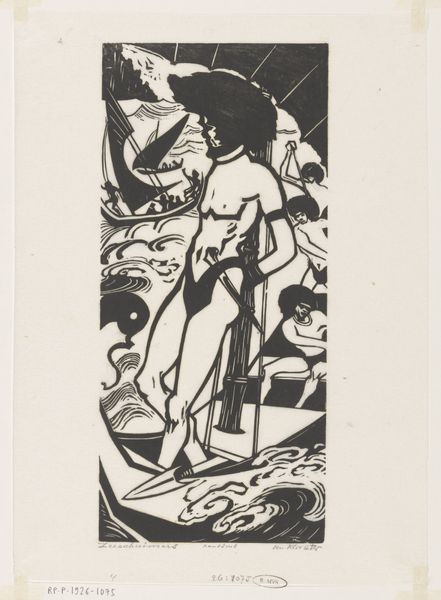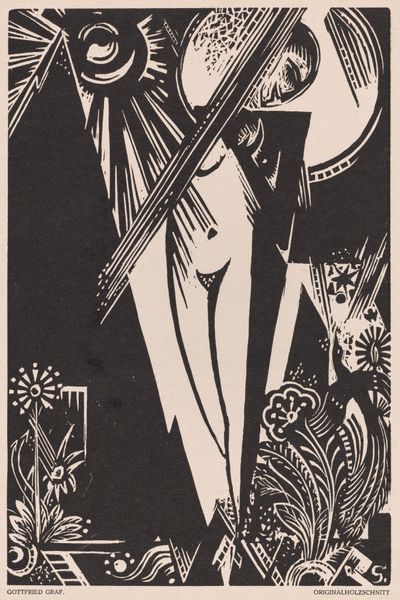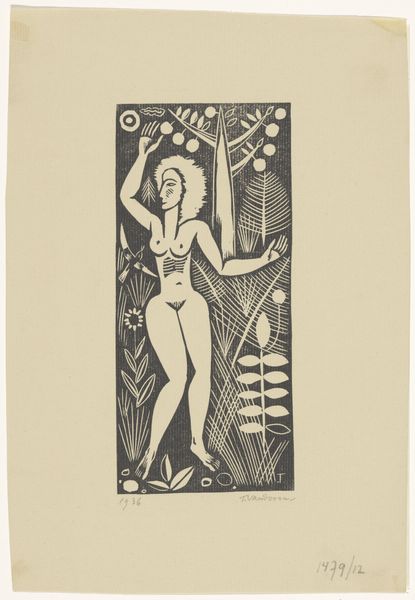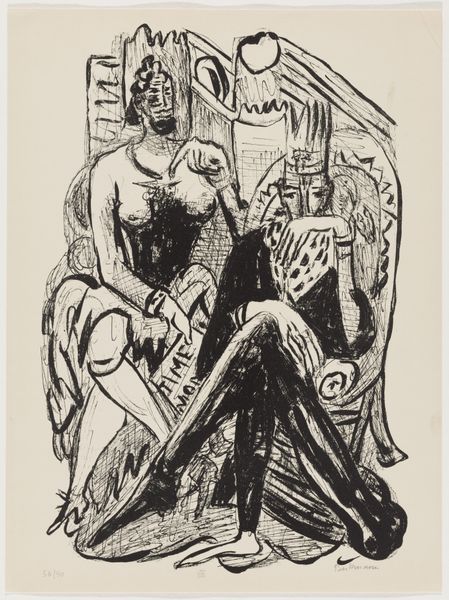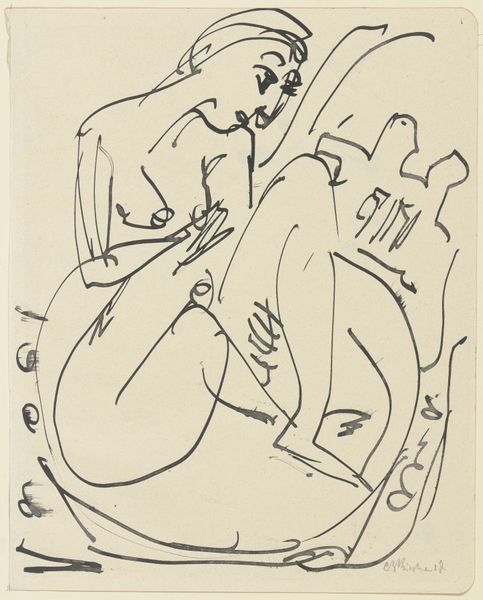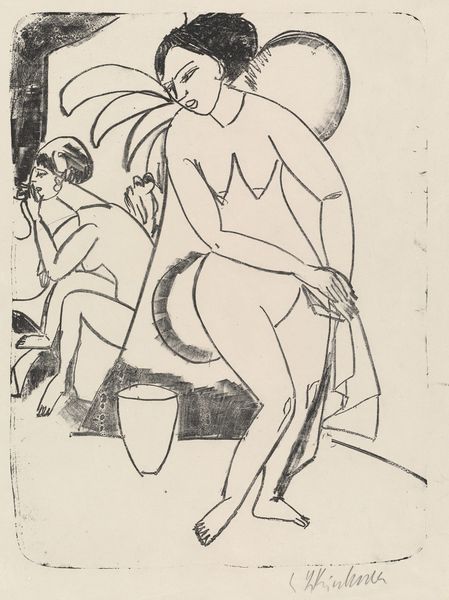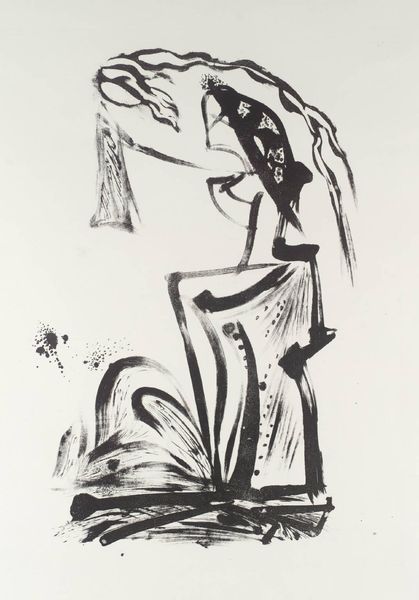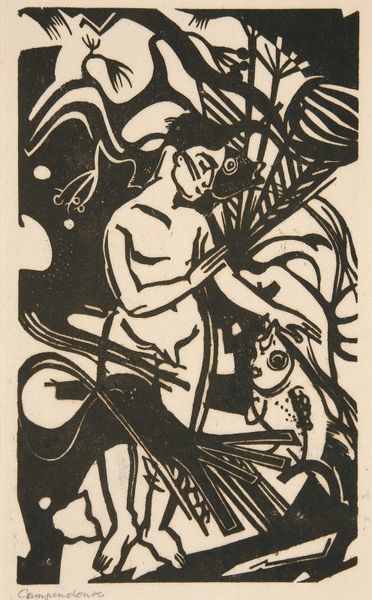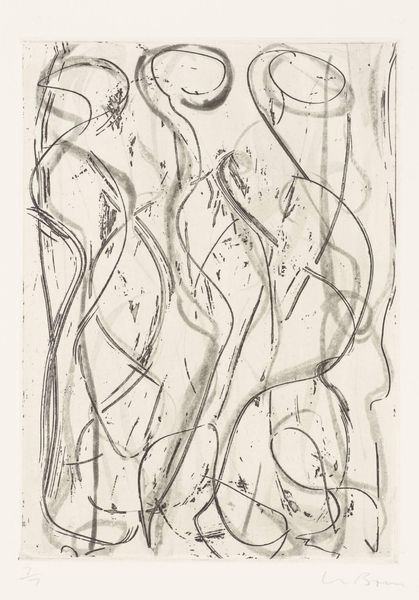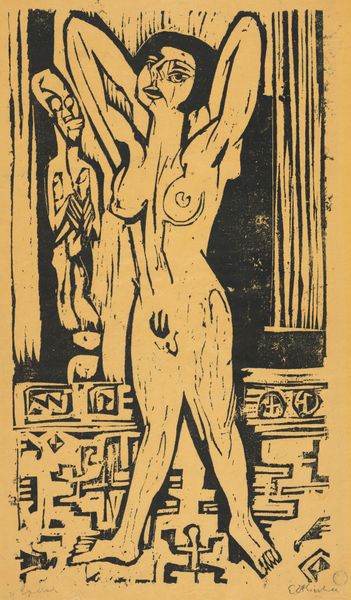
Copyright: Public Domain: Artvee
Editor: Here we have Ernst Ludwig Kirchner’s “Mary Wigman’s Dance,” created in 1933 using woodcut on textile. It’s stark, powerful. The black and white contrast is so bold. How does this piece fit into the art scene of its time? Curator: Well, considering Kirchner was associated with German Expressionism, it's essential to see this work in light of the socio-political climate of 1933. The Expressionists, originally celebrated for their raw emotionality and perceived challenge to bourgeoise social norms, were starting to feel the heavy hand of rising fascism, which would later declare them "degenerate". The artist may not have exhibited such a work prominently because that aesthetic style was becoming very unwelcome. Do you see how that might influence the mood of this particular piece, given Wigman’s dance itself would be interpreted in various ways during that tumultuous time? Editor: I do. It's like the joyous expression is tinged with an undercurrent of tension, or even fear. Like, can joy be authentic right now? Was dance and freedom of movement allowed during that time? Curator: Precisely. Remember, art institutions and patronage shifted dramatically in that era, favoring more nationalistic and classically inspired works. Kirchner, like many of his contemporaries, would soon face immense pressure. Knowing that context, does it alter your perception of the piece's bold contrast or the abstracted figure? Editor: It makes the starkness even more pronounced. The simplification becomes a kind of visual resistance. It’s not just a portrait; it's a statement about artistic freedom in a stifling environment. Thank you for shining a light on the background that brought this forth. Curator: And your engagement reveals how art becomes a silent witness to history. It encourages us to look critically at how culture and politics are always entwined.
Comments
No comments
Be the first to comment and join the conversation on the ultimate creative platform.
